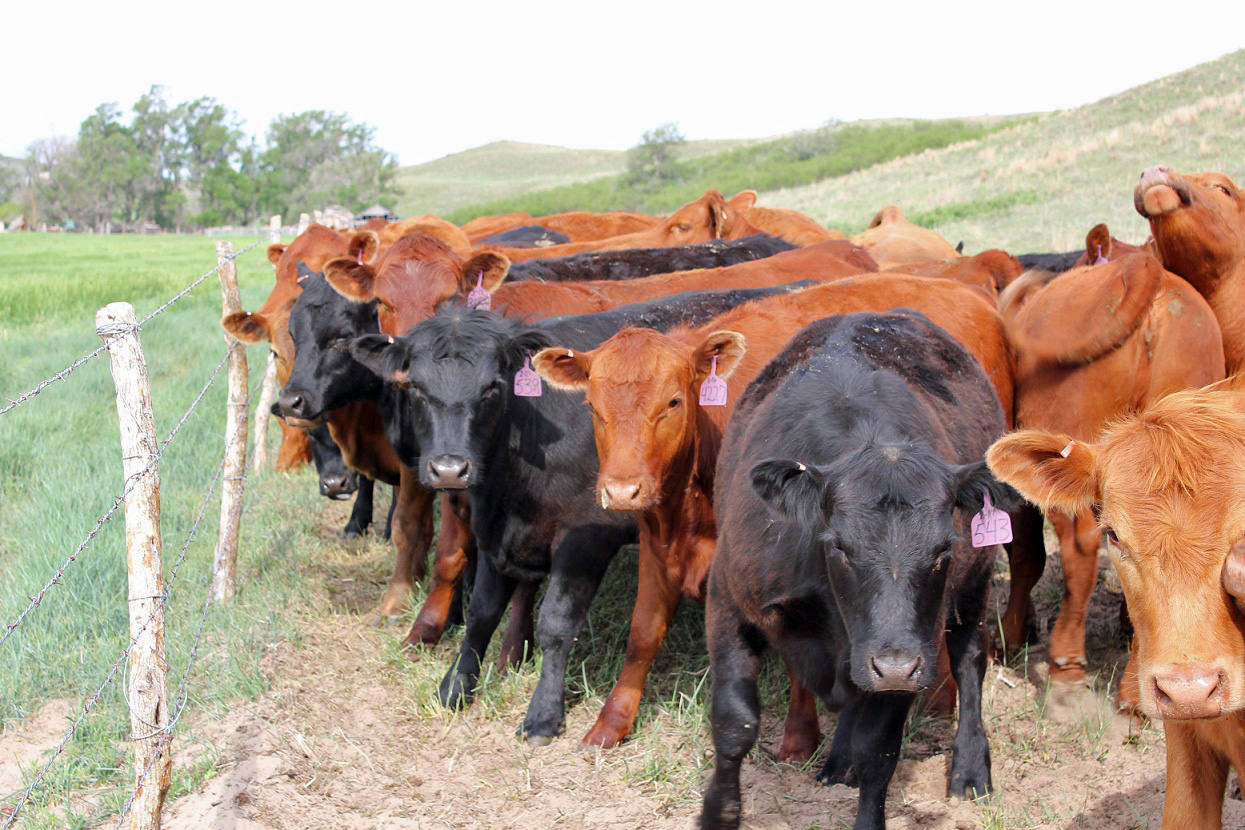
By Travis Mulliniks, UNL Beef Cattle Nutritionist – Range Production Systems
Optimizing a herd mix of different animal classes (i.e., cows and yearlings) offer different degrees of flexibility in management. A common recommendation in drought prone areas is that breeding herd forage demand should be capped at no more than 50 – 70% of a ranch’s carrying capacity during average rainfall years. This mixed herd can provide the grazing manager needed flexibility to quickly reduce stocking rates to match the reduced forage available on rangelands during drought years.
As drought conditions threaten livestock producers in the Great Plains, evaluating management practices that allow for increased adaptability for fluctuations in seasonal and annual forage production may be beneficial. A robust and annually updated drought contingency and grazing management plan should be part of the risk management for an operation.
With that in mind, being proactive in drought management is a key to drought survival. Current recommended strategies for managing in drought prone areas include conservative stocking rates, adequate stockpiled harvested feedstuffs, and adaptive grazing management. Evaluating livestock forage demand in light of precipitation variability, high pasture costs, and availability of crop residue can bring insight into what enterprises may best match available resources.
A study (Torell et al., 2010; https://journals.uair.arizona.edu/index.php/jrm/article/download/20057/19679) using production and economic data from New Mexico State University’s Corona Range and Livestock Research Center, near Corona, New Mexico evaluated the economic importance of adaptive grazing management with yearling animals in a cow-calf system. The objective was to evaluate the economics of conservative versus flexible grazing strategy where stocking rate would adjust with yearling steers to match forage resources over a 40-year span.
Due to forage availability dynamics in arid and semi-arid environments, a 50:50 forage allocation between cow-calf and yearling enterprises was found to be optimal; however, over time optimal cow numbers would decline as drought conditions force herd reductions. Due to high variability in forage production, these authors indicate that in some scenarios by the 35th year of this study no cows would be left on the ranch and it would be most profitable to be a complete yearling enterprise. As compared to a cow-calf operation, adding a flexible yearling enterprise to a cow-calf only ranch increased average annual net returns up to 66% with flexible grazing.
Even if forage conditions could be predicted with certainty, these authors suggest that herd expansion beyond a conservative level should occur with yearlings due to the expense relative to the short-term gain of adjusting cow herd numbers.
Although this study was conducted in a semi-arid environment with on average 15 inches of precipitation a year, managing with a mixed enterprise of flexible grazer can be applied across differing environments. This article doesn’t suggest how to implement a flexible grazing strategy; rather, the economic benefit of incorporating one into a cow-calf operation. This ratio of cow-calf and yearling enterprises or other flexible grazers may look different depending on a producers’ resources. The optimal mix of cows and flexible grazers would be dependent on cost of production for each enterprise. Flexible grazers could include developing more heifers at a low-cost, low-input system, yearling steers, or even purchasing thin open cull cows and rebreeding them.
A yearling/flexible grazing enterprise may not fit the goals and structure of every cow-calf producer. A yearling operation can increase production costs and financial risk, which may not justify the potential added net returns for a risk-adverse producer. However, the use of flexible grazers is a management tool that cow-calf producers should consider adding to their operation as part of a drought risk management plan to increase management flexibility and profitability.
To listen to BeefWatch podcasts go to: https://itunes.apple.com/us/podcast/unl-beefwatch/id964198047 or paste http://feeds.feedburner.com/unlbeefwatch into your podcast app.